Participant Details
- Community Arts Partner Name
- Patricia Auch
- Partner Type
- Individual
- Profile Photo
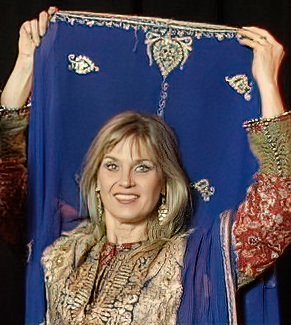
- Individual Bio or
Organizational Statement - For over 30 years Patricia has presented Arab dance and culture in a various formats for school and community groups. She has a B.A. in Elementary Education, developed educational outreach programs for Jawaahir Dance Company, and was a rostered artist with Young Audiences of Minnesota, the Minnesota State Arts Board, and COMPAS for ten years. In 2013, Patricia was accepted to the ArtsWA Teaching Artist roster and in 2014, was accepted to Seattle’s Community Arts Partner Roster. A lifelong student of dance, Patricia has focused on Middle Eastern dance since 1975. She studied with master teacher Cassandra Shore in Minneapolis, and attended dance workshops with nationally and internationally recognized Master teachers to learn dances of Egypt, Lebanon, Morocco, Persia, Saudi Arabia, and Tunisia. She furthered her studies with trips to Egypt, Lebanon, Morocco, and attends Simon Shaheen’s Arabic Music Retreat. As a soloist, Patricia performed at Arabic restaurants, weddings, and community events. A founding member of Jawaahir Dance Company in Minneapolis, she performed with the company and taught beginner through advanced dance students at the Cassandra school until her relocation to Seattle in 2007. Patricia’s programs combine her two passions — teaching and the joyous, expressive art of Arabian dances.
Contact Information
- First Name
- Patricia
- Last Name
- Auch
- Address
- 17604 SE 60th Street
- Address 2
- City
- Bellevue
- State
- WA
- Zip
- 98006
- zulaikaraqs@gmail.com
- Phone
- 425-652-6994
- Website, Blog or Social Media Link
- www.zulaika.net
- Zulaika
- Other
- Patricia (Zulaika) Auch
Grade Levels Preferred
- Grade Levels Preferred
- K-2, 3rd - 5th, 6th - 8th, 9th - 12th
Artistic Disciplines
- Discipline
- Dance, 3, 6
- Type
- Traditional Arab Dance and Music from Egypt, Lebanon, Saudi Arabia, Tunisia, and Morocco.
Experience
- Previous School Partnerships
- Waldron Island School
- Bellevue International School
- WA State TAT Lab Graduate
- No
- Other Trainings or Certifications
- Bachelors Degree in Elementary Education
- Journey through Egypt 1-4
- ArtsWA Teaching Artist
- 4Culture Touring Artist
- Founding Member of Jawaahir Dance Company
- Minnesota State Arts Board Teaching Artist
- Young Audiences of Minnesota Teaching Artist
- Sample Lesson Description: Student / Classroom Residencies
- Topics: Arab Folk Dances, Arab Music Traditions, Arab Folkwear, Regional Differences between and within countries, Language arts (stories, Arab Language), Arts & crafts.
Sample Workshop: Arab Music & Dance
- Introduction of artist and workshop
- Multi Media PowerPoint with photos, sounds, and video clips for background information, into to Arab music, intro various Arab dances
- Participation: Teach traditional ways of audience participation (clapping, verbal expressions), teach simple dance movement, teach M&F versions of Egyptian stick dance, teach girls Khaliji with thobes, teach boys Debke.
- Q&A and thank you.
- Artist Introduction: Who am I, what do I do, Why do I do it…
- Residency Introduction: What will you see, hear, and do, and what you will learn.
- Discussion: Western dance vs. Arab dance, when people dance, why people dance, demonstrate footwork (waltz) vs. torso to rhythm.
- Video clips of different Arab dances: what did you see: costumes, movements, what did you hear?
- Close: Review Q&A, announce next day’s plan.
- Introduce Arabic music: PowerPoint with photos and sounds of instruments, basic Arabic music theory- what is different from Western music.
- Listen to different Rhythms & learn to clap to them.
- Learn to play sagats (finger cymbals).
- Introduce Arabic dance movements, walk move to the beat, Arab party steps to current Arab pop.
- Cultural activity: Tasfic (syncopated clapping), Zagareet (traditional female vocalization), verbal expressions of appreciation (aiewa, ya ayni,…).
- Close: Review Q&A, announce next day’s plan.
- Teach Egyptian Assaya (stick dance): dances background/history, when performed, difference between men’s and women’s version.
- Teach Khaliji Dances: dances background/history, when performed, difference between men’s and women’s version.
- Cultural Activity: create traditional performance space (Salon of Enchantment), students alternate roles as audience and dancers using dances learned and audience participation techniques (clapping, verbal expressions).
- Close: Review Q&A, announce next day’s plan.
- Teach Debke line dances: how to dance in a line, basic debke steps, learn 6 count and 8 count step combinations.
- Cultural Activity: Egyptian wedding Zeffa (procession): background information, students play different roles; bride, groom, parents of couple, female candle holders, male stick dancers, female professional dancers with sagats, and well wishers saying Mabrouk (congratulations) and zagareeting. Procession ends at “reception party” where students improvised party dance steps and debkes they have learned.
- Review: Review dances, see video clips of Arab Dances, Cultural Activities may include fashion show of Arab traditional folkwear, arts & crafts
- Demonstration: Perform Tunisian Jar dance for students, demonstrate the traditional dress, present background information. Review as above.
- Performance: Review dances learned, break students in groups to present the dances to the others.
- Wrap-up: May share part of their journals with the group, review new vocabulary, review countries visited, share favorite dance or movement, how is dance different in the Arab World from the students’ world? What new facts about Arabs did they learn that surprised them?
- Sample Workshop Description: Teacher Professional Development
- Sample Workshop: Arab Music & Dance
- Introduction of artist and workshop
- Multi Media PowerPoint with photos, sounds, and video clips for background information, into to Arab music, intro various Arab dances
- Participation: Teach traditional ways of audience participation (clapping, verbal expressions), teach simple dance movement, teach M&F versions of Egyptian stick dance, teach girls Khaliji with thobes, teach boys Debke.
- Lists of teacher resources
- Q&A and thank you.
Areas of Experience and Expertise
- Approved Professional Development Provider
- 1
- Approved Classroom Residency Provider
- Yes
Teaching Approach
- Teaching Philosophy + Approach
- As a teaching artist and a former schoolteacher, I feel it is important to work with the teacher/s to create the best experience for them, their students and me.
- During initial contact, learning the teacher/s primary goals, the amount time I will be working with the students, and the space I will be using, any student special needs, etc., guides me in recommending appropriate topics for the workshop/residency. This can be done by phone or email.
- A planning meeting finalizes topics and goals for the workshop/residency.
- Prior to this meeting, I send an introductory packet, which includes a list of agreed upon topics and goals, suggestions for final projects, a list of needs for equipment and space, and background material for the teachers.
- With the teachers’ guidance, activities will be chosen and geared to the, ages, learning styles, number of students, and the length of contact time.
- Planning time will also be used to setup a workable schedule for the students, school, and myself; including selection of an appropriate space for the selected activities.
- Other planning topics to be covered are; an agreed-upon list of materials to be provided by the school and those to be provided by me, where they are located, and where they are to be stored during the residency/workshop, and the school’s discipline policies.
- Following the meeting and prior to the workshop or residency, if requested, I send the teachers a workshop/residency packet containing background materials, suggested reading lists, and lists of web sites and other resources for teacher and student exploration.
- One month to 2 weeks prior to the workshop or residency, I contact the organizer to reconfirm agreed times, travel arrangement, fees, topics, space, special materials, and closing project if requested.
- Wrap-up: This can be in the form of a daily review and/or final review depending on the length of the workshop/residency. It allows us to make necessary changes, affirm or reset expectations, and allow for unexpected conditions like fire drills. It is also important to me to know that I have met the teachers’ expectations and if there is any follow up assistance or information I can leave with them and their students.
- Curriculum Integration Possibilities
- Music: Students can learn about the different instruments used in Arabic music, different styles of music from classical to folk to pop, and music theory - what makes Arabic music different from Western music. Social studies, language arts, and cultural studies are highlighted for elementary students. Students can learn about English words that have Arabic origin, about Arab storytelling traditions, and about other Arab arts. In addition to these subjects, secondary students learn about Arab contributions to science, math, and literature. I pull lessons from the curriculum when requested to include additional subject areas during my residencies. Health & Fitness: By expanding their movement vocabulary, students gain a better knowledge of their body, learn to use movement as self expression, learn how other cultures use dance in everyday life and celebrations and how dance can reflect daily activities. Other Subjects: Patricia has curriculum enrichment lesson plans (from the ACCESS Cultural Arts Program, Detroit) written specifically to teach K-12 students about the Arab world in additional subject areas.
- Special Skills and Areas of Expertise
- I have experience working on projects with gifted students. I have also taught workshops on Arab dance and music to K-12 teachers and at two conferences for dance educators.
- Testimonials from Schools
- Joanne Colman Wester, teacher, Decator Island School, jcolmanweater@lopezislandschool.org
"What an amazing 3 days - a glimpse into a world most of us will never get to visit. Thank you for expanding our horizon!" "I think it is so important to offer a more positive view of the Arab World than I often see in the daily news. Our kids were so lucky to have 3 days with you."
Isa Delahunt, teacher, Waldron Island School, idelahunt@orcas.k12.wa.us
"I'd be honored to provide a great recommendation for you to whoever might ask."
Marrene Franich, teacher, International School Bellevue franichm@bsd405.org 206-450-8731 Monica Sands, Children’s Librarian, King County Library System mesands@kcls.org 253-630-8761 Lindsay Squires, Events Manager, Seattle Children’s Museum admininfo@thechildrensmuseum.org 206-576-2332
Fees
- Fees
- $50/hr. planning/prep time $200 for 1 workshop $300/day for residency, or 4 workshops on same day
Images
- Image
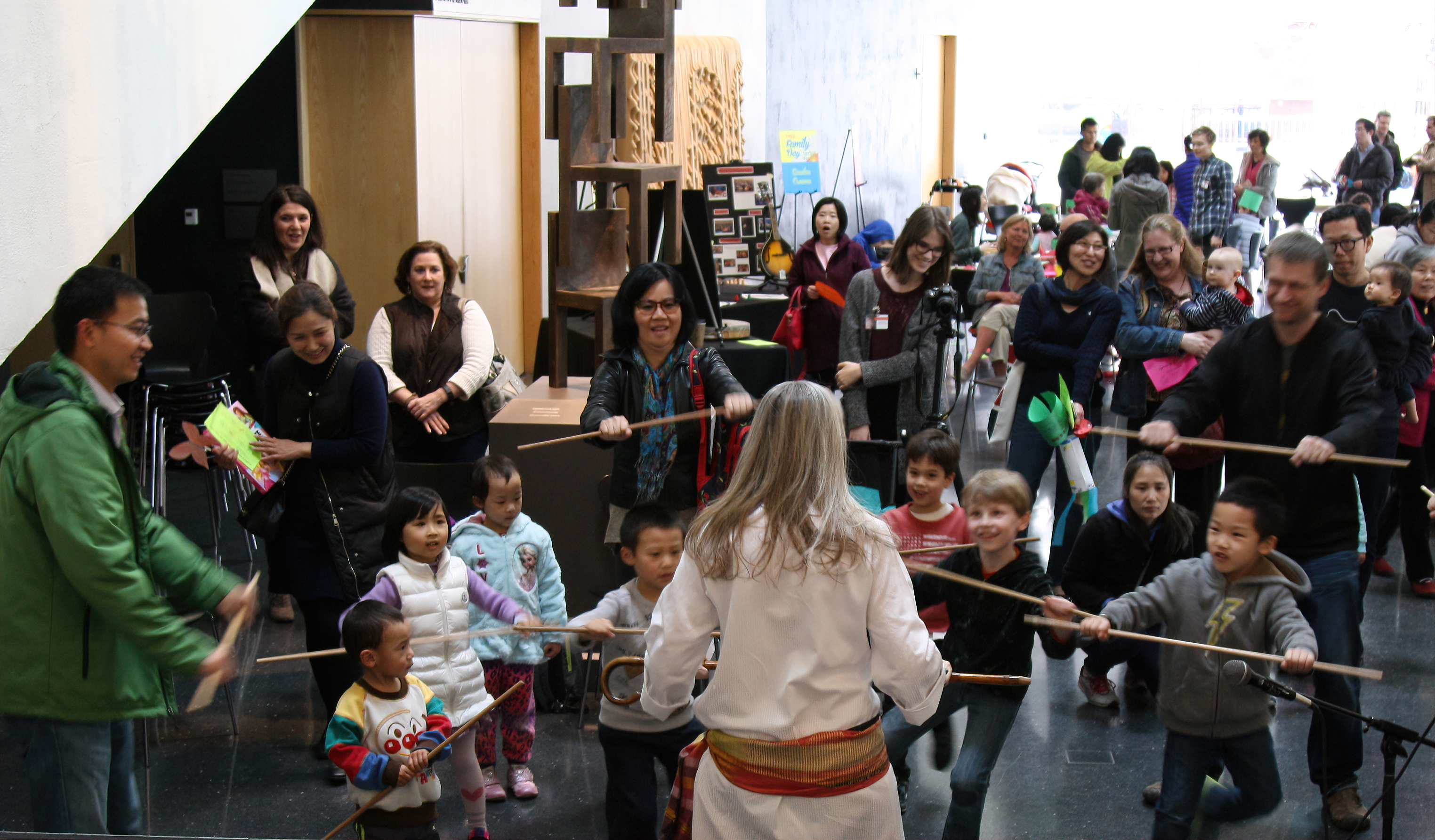
- Image Description
- Families learning Egyptian Stick dance at Bellevue Ats Museum's Family Day.
- Image
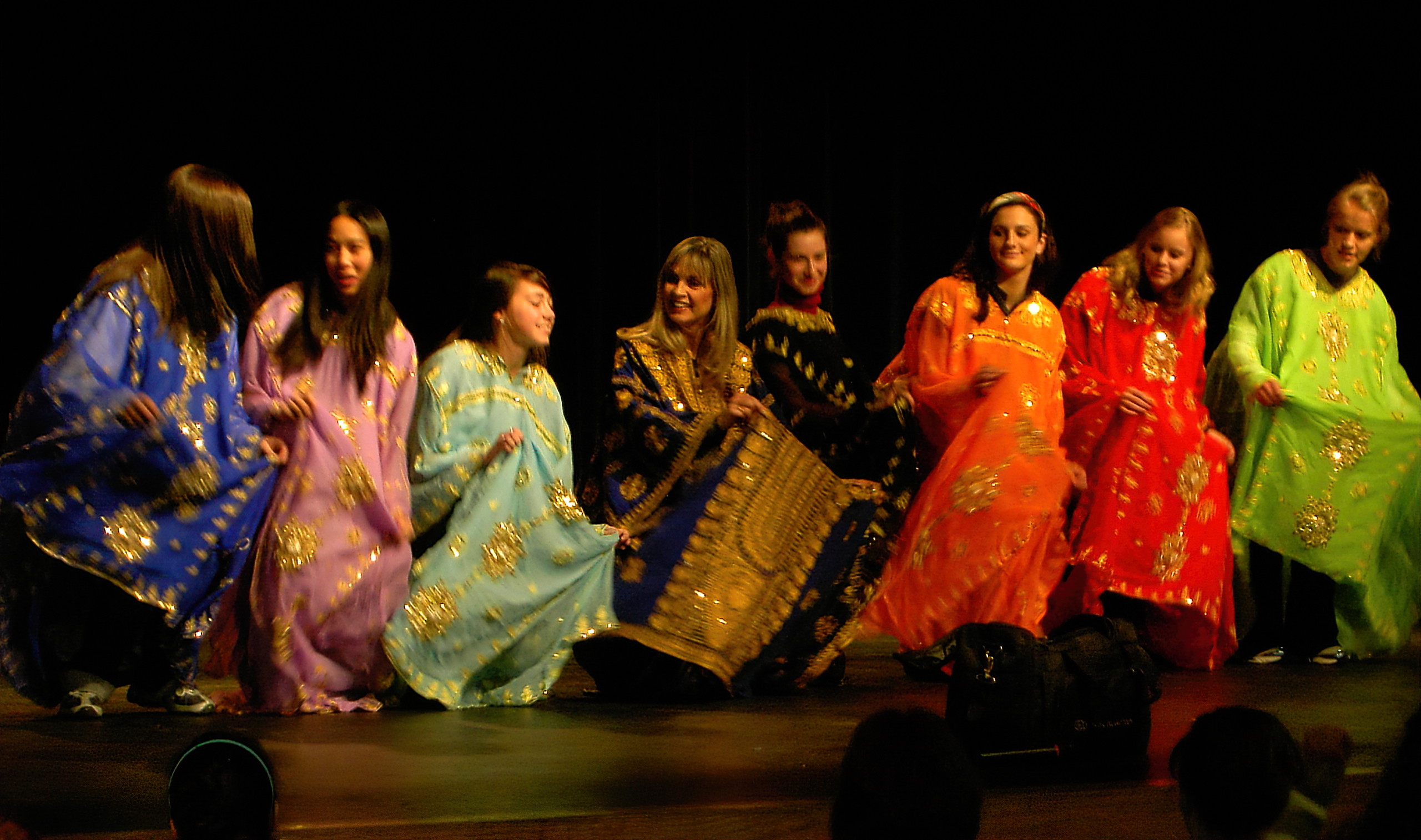
- Image Description
- Teaching Khalijji at Issaquah High School
- Image
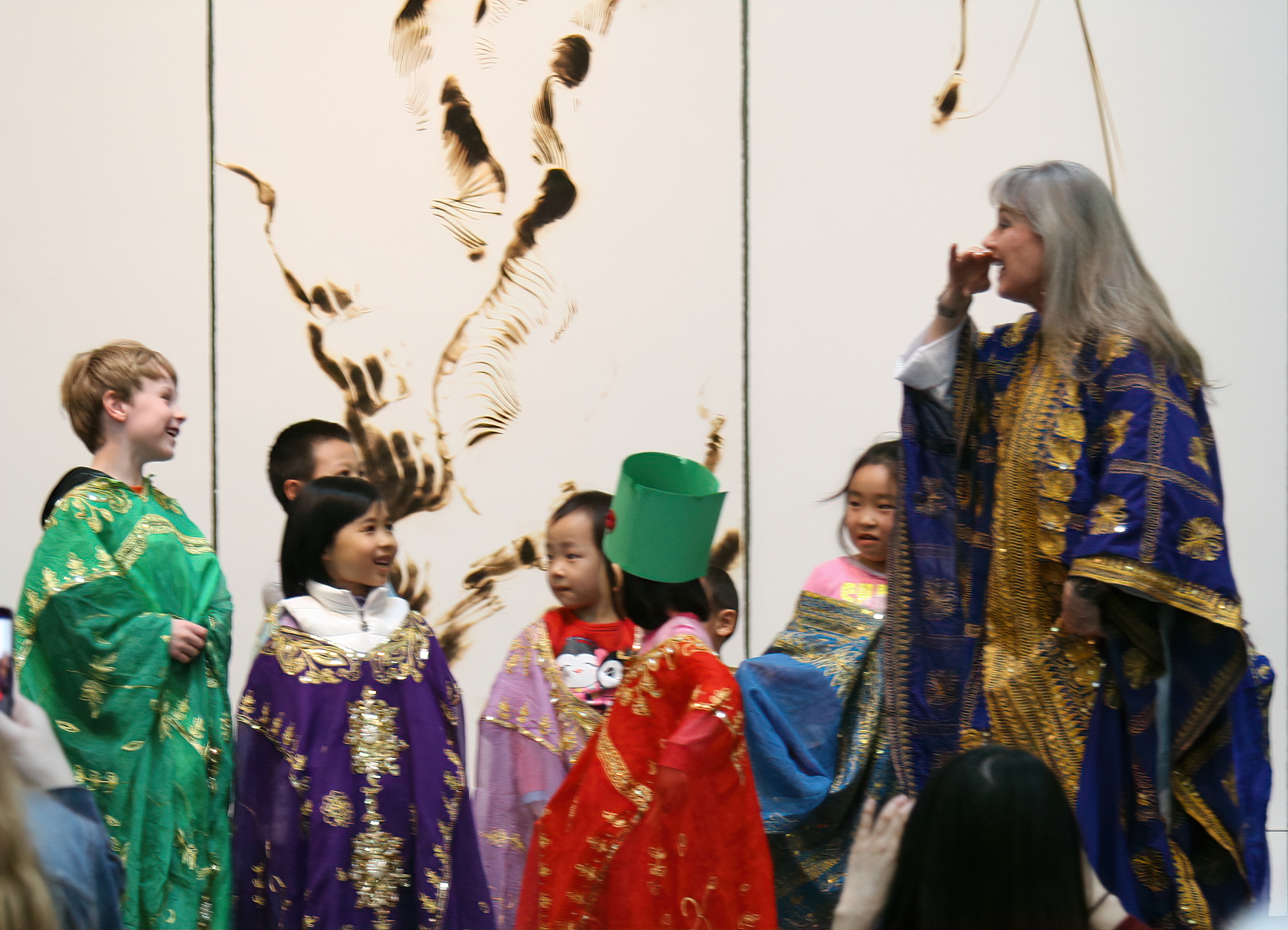
- Image Description
- Teaching participants to Zagareet at BAM Family Day
- Image
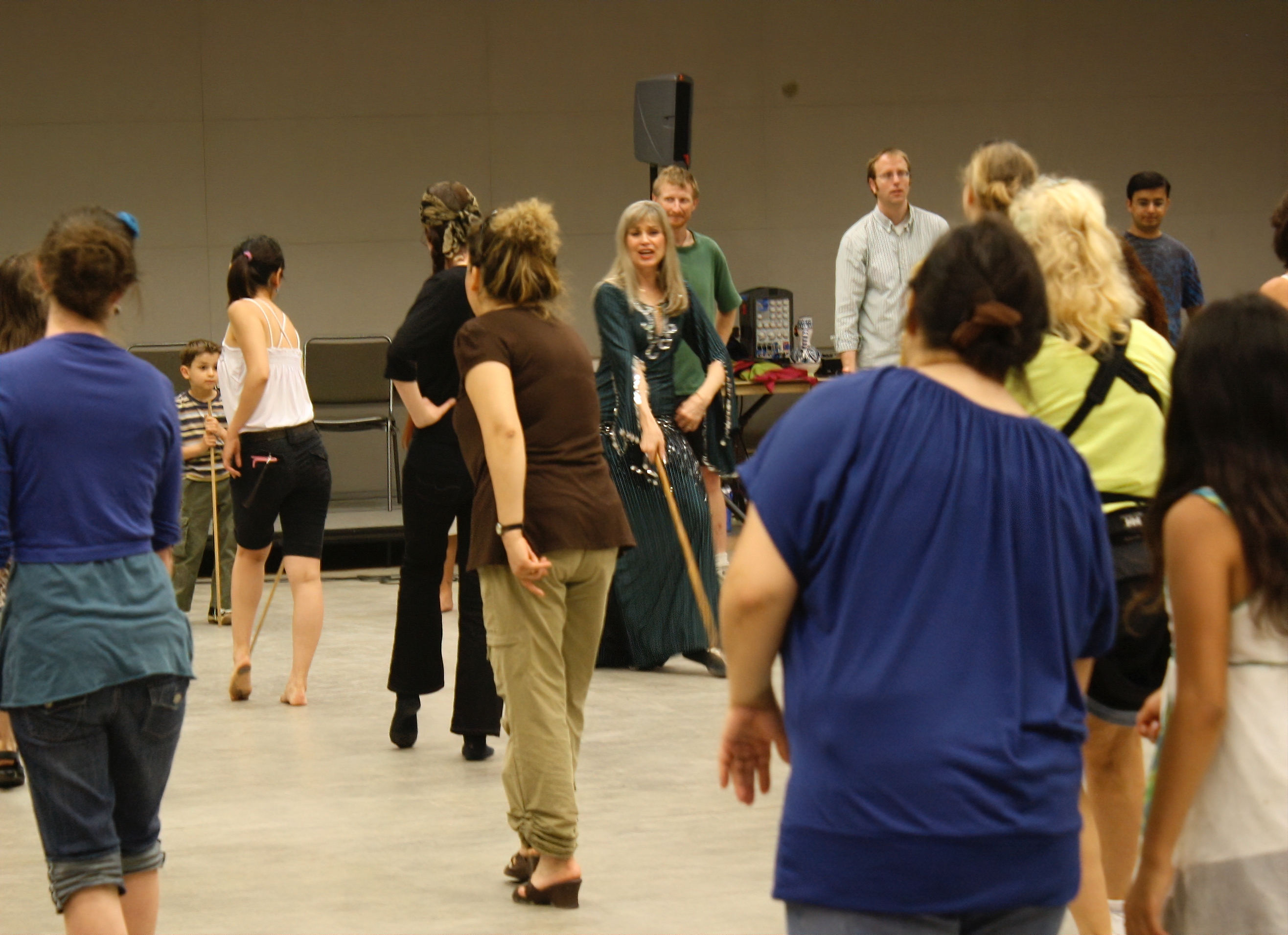
- Image Description
- Teaching Egyptian Stick Dance at Northwest Folklife
- Image
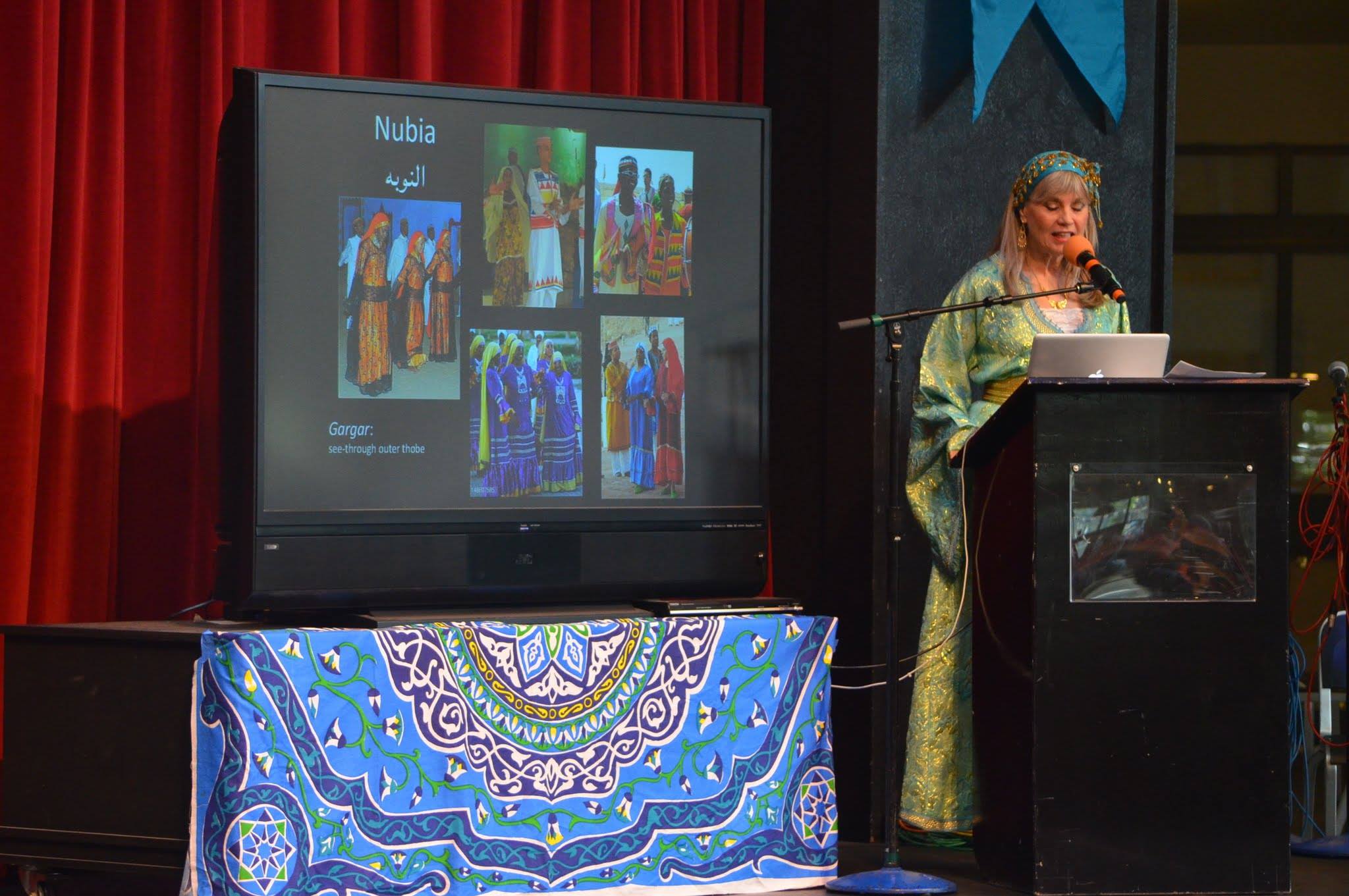
- Image Description
- Presenting a PowerPoint talk on Traditional Folkware at Seattle Arab Fest
Video
- Video Link
- Egyptian Stick Dance
- Video Description
- Teaching 1st graders Egyptian Assaya (stick dance)
- Video Link
- Video Description
- Video Link
- Video Description